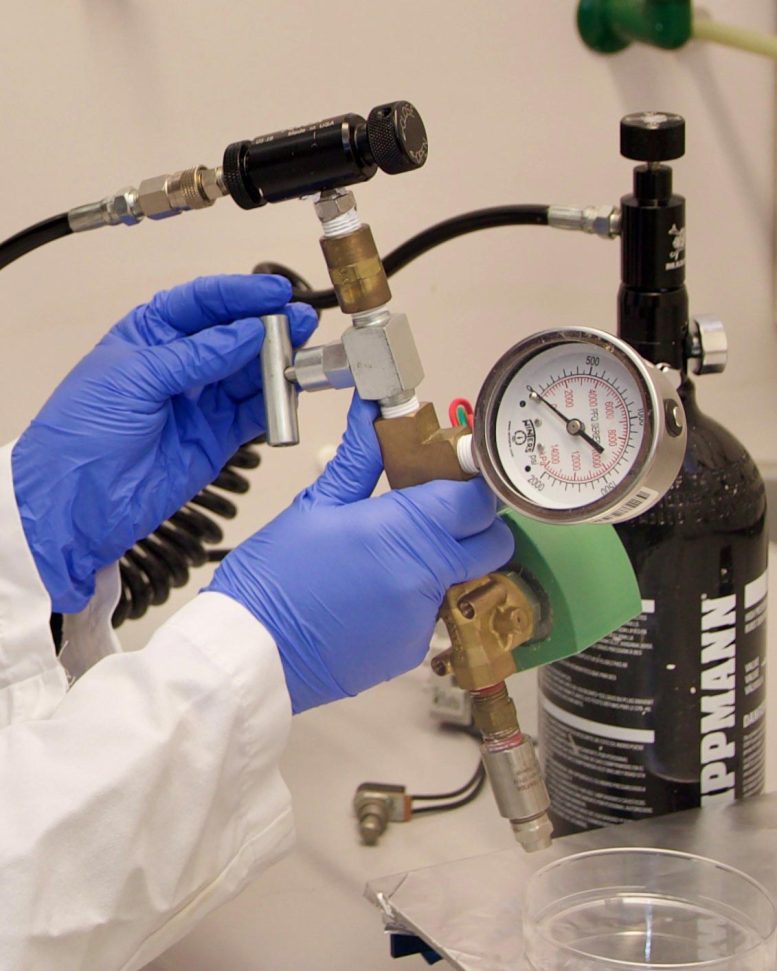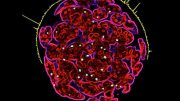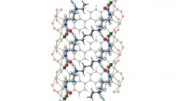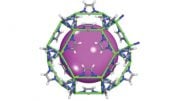
The MOF-Jet, pictured here, can “shoot” gene therapies into cells without the pain of a needle. Credit: Jeremiah Gassensmith
Scientists have taken steps towards developing a painless method of vaccine delivery using powdered vaccines and a compressed gas-driven “MOF-Jet.” This system could potentially provide therapeutics against cancer and other diseases without the need for needles or refrigeration. The project, presented at the ACS Spring 2023 hybrid meeting, was conceived during the pandemic when the principal investigator, Dr. Jeremiah Gassensmith, experimented with compressed gas-powered jet injection systems at home.
Nobody likes needles, but they’re necessary for delivering many vaccines and biologics into the body. But what if those could be puffed through the skin instead, with just a little pressure, like being hit in the arm with a foam toy? Today, scientists report steps toward making that a reality. Using powdered vaccines that don’t require refrigeration and a system driven by compressed gas, their “MOF-Jet” could easily deliver therapeutics against cancer and other diseases in a relatively painless way.
The researchers will present their results at the spring meeting of the American Chemical Society (ACS). ACS Spring 2023 is a hybrid meeting being held virtually and in-person March 26–30, and features more than 10,000 presentations on a wide range of science topics.
The idea for the project was formed out of pandemic-induced boredom. The project’s principal investigator, Jeremiah Gassensmith, Ph.D., had ordered inexpensive pieces of a compressed gas-powered jet injection system to mess around with while stuck at home. Later, after everyone was back on campus, he handed the pieces over to Yalini Wijesundara, a graduate student in the lab, with the instructions, “See what you can do with this.”
Wijesundara, who is presenting the work at the meeting, took these instructions in stride. She had previously researched other jet injectors dating back to the 1960s that use compressed gas to inject a narrow stream of fluid. If the injectors could be modified to fire solids, she figured, they could deliver cargo encased in metal-organic frameworks, or MOFs, as well. These frameworks are porous, crystalline structures that act like molecular “cages” to encapsulate a wide variety of materials, including nucleic acids and proteins. By combining the jet injector with the lab’s existing work on MOFs, Wijesundara created a “MOF-Jet.” The jet can deliver powders to cells by, quite literally, shooting them in with air. Both Gassensmith and Wijesundara are at The University of Texas at Dallas.
Jet injectors previously saw widespread use in the military, but they were painful and the fluid often splashed back, potentially spreading other diseases such as Hepatitis B. A modern-day descendant is the “gene gun,” which is typically used in veterinary medicine and can cost tens of thousands of dollars. These devices also shoot biological cargo into cells. In this case, the cargo is attached to the surface of a metal microparticle, typically made of gold or tungsten. But once it penetrates the skin, the metal particles remain there and can speed up the degradation of the biological material.
A different strategy would be to put the cargo inside a MOF. Gassensmith’s group previously worked with the MOF called zeolitic-imidazolate framework eight, or ZIF-8. “Compared to gold, it’s cheap and protects biological materials, such as nucleic acids,” explains Wijesundara. “We can also store vaccine formulations within it as powders at room temperature, which eliminates the need for the extremely cold temperatures many liquid vaccines require.”
The team encased a variety of biological materials within ZIF-8, which protected them from being broken down too quickly. To deliver the materials into cells, the team used their own modified, gene gun-inspired “MOF-Jet.” Wijesundara created “bullets” for the device, each loaded with a dose of functionalized ZIF-8, and a puff of gas fired the powdered formulation into cells, which was as easy as just “pointing and shooting.” They tested their system and showed that the MOF-Jet delivered a ZIF-8-encased gene to onion cells and a ZIF-8-encased protein to mice. According to Gassensmith, the blast from the injector just feels “like you got hit with a Nerf bullet” — much less painful than being stuck with a needle.
By tinkering with the MOF-Jet, Wijesundara soon realized that cargo release could be tuned by simply changing the injector’s carrier gas. ZIF-8 is sensitive to acidic environments, and when carbon dioxide reacts with water in cells, it makes carbonic acid that, in turn, helps break apart the MOF. “If you shoot it with carbon dioxide, it will release its cargo faster within cells; if you use regular air, it will take four or five days,” she explains. This means that the same drug could be released over different timescales without changing its formulation. “Once we realized that, it opened up a lot of possibilities,” says Gassensmith.
The team is now using this method to deliver chemotherapeutics and adjuvants as a potential treatment for melanoma, the most serious form of skin cancer. They say that because the MOF-Jet can disperse material over a wide area, it could distribute a cancer therapeutic into a melanoma more evenly than with a needle, which is the current delivery method. And simply by controlling the carrier gas, they could deliver chemotherapeutics with a fast- or slow-release timeframe, depending on a patient’s needs. Though research is still ongoing, preliminary experiments are yielding promising results. Wijesundara and Gassensmith say that the adaptability of their MOF-Jet could allow a wide number of applications, from veterinary medicine to agriculture, or someday even human vaccinations or treatments.
The researchers acknowledge support and funding from the Army Research Laboratory, the National Science Foundation and the Welch Foundation.
Meeting: ACS Spring 2023
Title
Carrier gas triggered controlled biolistic delivery of DNA and protein therapeutics from metal-organic frameworks
Abstract
The efficacy and specificity of protein, DNA, and RNA-based drugs make them popular in the clinic; however, these drugs are often delivered via injection, requiring skilled medical personnel, and producing biohazardous waste. Here, we report an approach that allows for their controlled delivery, affording either a burst or slow release without altering the formulation. We show that when encapsulated within zeolitic-imidazolate framework eight (ZIF-8), the biomolecules are stable in powder formulations and can be shot with a low-cost gas-powered “MOF-Jet” into living animal and plant tissues. Additionally, their release profiles can be modulated through judicious selection of the carrier gas used in the MOF-Jet. Our in vitro and in vivo studies reveal that, when CO2 is used, it creates a transient and weakly acidic local environment that causes a near-instantaneous release of the biomolecules through an immediate dissolution of ZIF-8. Conversely, when air is used, ZIF-8 biodegrades slowly, releasing the biomolecules over a week. This is the first example of controlled-biolistic delivery of biomolecules using ZIF-8, which provides a powerful tool for fundamental and applied science research.









Be the first to comment on "Needle-Free Revolution: Painless “MOF-Jet” Delivers Vaccines With a Puff of Compressed Gas"